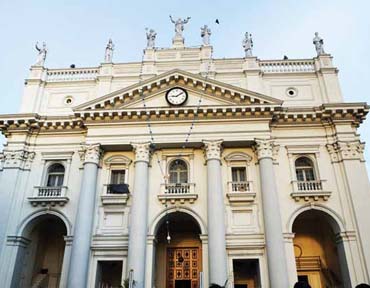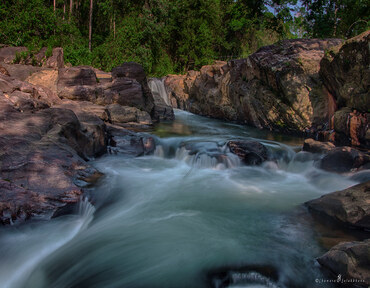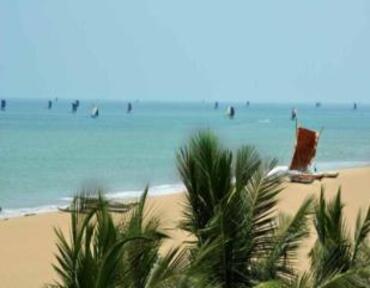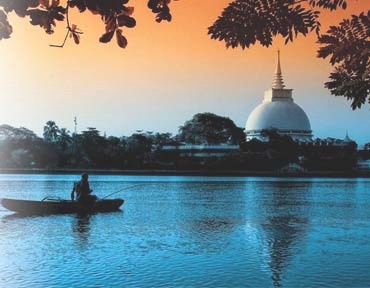


St. Lucia's Cathedral is located at Kotahena, in the northeast of Colombo, on 18,240 sq. ft. of land, and is dedicated to Saint Lucy. It origins from a small structure for worship built during the Dutch occupation. The interior of the cathedral consists of a row of ornate, larger than life statues of saints along the side aisles, sculptured and painted in minute detail; many of these statues were installed in 1924. Open confessionals of intricately carved dark wood are also placed along the aisles. On the left, in front of the sanctuary is a unique dark-skinned statue of the Madonna called "Our Lady of Kotahena", which is taken in procession during the annual celebrations. Altars of white marble are located in the transepts of the church with relics enshrined within them

Nestle in the Western region of Sri Lanka, away from the busy stressful eyes of urban population, the Athwelthota waterfall or Pilithudu Ella is one of the untouched waterfall in Sri Lanka where the nature endowed the prospect of perfect bio-diversity with the touch of serenity. As the geographical existence near the threshold of the Western province and the southern province and its natural geographical advantage near the Sinharaja Rain Forest, the immeasurable natural beauty is what brings this amazing destination the value it needed to standup alongside with many popular and similar destinations. The waterfall area is comprised with larger upper pool area, the wide spread fall area, the forest cover that protects the destination best. Thus the Ambiance has given this area a mysterious beauty with extremely comfortable feelings associated with it. The ambience aside the natural beauty alone can accommodate many of visitors' fantasies of such magnificent destination, offering various activities such as hiking, trekking wildlife observation wildlife photography, waterfall abseiling in the immediate area. There is the prospective potential in whitewater rafting yet is a extremely dangerous place for visitors as well as the tranquility of the destination and its serine atmosphere. The area is open for visiting, bathing, photography, family outing and many more of water related recreational activities yet be warned of to never harm the delicate bio-diversity in the vicinity.

description not found

Kaluthara Bodhiya Is a Bodhi Tree (Sacred Fig)Located In Kaluthara Is Situated On The Galle Colombo Main Road By The SideOf Kalu River Just South To THE kaluthara City .It Is Believed To Be One of The 32 Saplings Of The Jaya Sri Lanka.According To Ancient Chronicle Sinhala Bodhiwamsa ,32 Saplings Of Sacred Figs Which Were Sprouted From Jaya siri Maha Bodhi Were Planted In Various Parts Of The Country As Instructed by arahat mahinda thera further the chronicle statethat this bodhi tree existed Intact Till The 15th century ad.the buddhist temple kalutara viharaya and a modern stup kaluthara chathiya are located in close proximity to this sacred fig one of the most venerated religious place in sri lanka hundreds of buddhists visit this religious place daily.